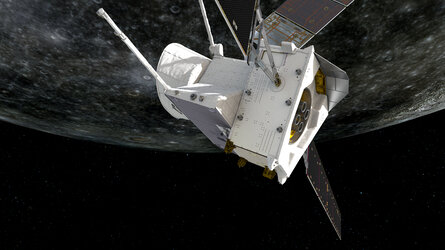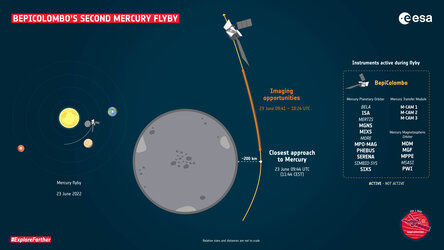Accept all cookies Accept only essential cookies See our Cookie Notice

About ESA
The European Space Agency (ESA) is Europe’s gateway to space. Its mission is to shape the development of Europe’s space capability and ensure that investment in space continues to deliver benefits to the citizens of Europe and the world.
Highlights
ESA - United space in Europe
This is ESA ESA facts Member States & Cooperating States Funding Director General Top management For Member State Delegations European vision European Space Policy ESA & EU Space Councils Responsibility & Sustainability Annual Report Calendar of meetings Corporate newsEstablishments & sites
ESA Headquarters ESA ESTEC ESA ESOC ESA ESRIN ESA EAC ESA ESAC Europe's Spaceport ESA ESEC ESA ECSAT Brussels Office Washington OfficeWorking with ESA
Business with ESA ESA Commercialisation Gateway Law at ESA Careers Cyber resilience at ESA IT at ESA Newsroom Partnerships Merchandising Licence Education Open Space Innovation Platform Integrity and Reporting Administrative Tribunal Health and SafetyMore about ESA
History ESA Historical Archives Exhibitions Publications Art & Culture ESA Merchandise Kids Diversity ESA Brand Centre ESA ChampionsLatest
Space in Member States
Find out more about space activities in our 23 Member States, and understand how ESA works together with their national agencies, institutions and organisations.
Science & Exploration
Exploring our Solar System and unlocking the secrets of the Universe
Go to topicAstronauts
Missions
Juice Euclid Webb Solar Orbiter BepiColombo Gaia ExoMars Cheops Exoplanet missions More missionsActivities
International Space Station Orion service module Gateway Concordia Caves & Pangaea BenefitsLatest
Space Safety
Protecting life and infrastructure on Earth and in orbit
Go to topicAsteroids
Asteroids and Planetary Defence Asteroid danger explained Flyeye telescope: asteroid detection Hera mission: asteroid deflection Near-Earth Object Coordination CentreSpace junk
About space debris Space debris by the numbers Space Environment Report In space refuelling, refurbishing and removingSafety from space
Clean Space ecodesign Zero Debris Technologies Space for Earth Supporting Sustainable DevelopmentLatest
Applications
Using space to benefit citizens and meet future challenges on Earth
Go to topicObserving the Earth
Observing the Earth Future EO Copernicus Meteorology Space for our climate Satellite missionsCommercialisation
ESA Commercialisation Gateway Open Space Innovation Platform Business Incubation ESA Space SolutionsLatest
Enabling & Support
Making space accessible and developing the technologies for the future
Go to topicBuilding missions
Space Engineering and Technology Test centre Laboratories Concurrent Design Facility Preparing for the future Shaping the Future Discovery and Preparation Advanced Concepts TeamSpace transportation
Space Transportation Ariane Vega Space Rider Future space transportation Boost! Europe's Spaceport Launches from Europe's Spaceport from 2012Latest

Mercury’s magnetosphere during BepiColombo’s third flyby (annotated)
Thank you for liking
You have already liked this page, you can only like it once!
The ESA/JAXA BepiColombo spacecraft sped through the magnetosphere of Mercury on 19 June 2023 during its third of six flybys at the planet. Using data collected by the JAXA-led Mercury Magnetospheric Obiter’s Mass Spectrum Analyser (MSA), Mercury Ion Analyser (MIA), and Mercury Electron Analyser (MEA), and combining these measurements with a computer model to determine the origin of detected ions based on their motion, various features encountered along the trajectory of the spacecraft were revealed.
BepiColombo’s trajectory is shown as the yellow line in this graphic, with the various features encountered along the way labelled accordingly. A detailed explanation is provided below:
The first feature BepiColombo encountered, at 18:44:22 Universal Time (UT), was the bow shock. This is the boundary between the free-flowing solar wind and the planet’s magnetosphere.
Next, it crossed the magnetopause, which separates the shocked solar wind in the magnetosheath from the rest of Mercury’s magnetosphere, at 19:14:00 UT.
Measurements made between 19:10:30 and 19:27:34 UT revealed a region of turbulent plasma at the edge of the magnetosphere, hosting particles with a wide range of energies. This region is called the low-latitude boundary layer (LLBL).
At 19:24:25 UT, just as BepiColombo entered the shadow of Mercury, the MSA and MIA instruments detected an intense cold ion signature while MEA observed a strong reduction in the number of electrons. The spacecraft remained in the planet’s shadow until about 19:39, during which time it also detected heavy ions reflecting the chemistry of the planet’s surface.
Immediately after the LLBL, at 19:28:41 UT, BepiColombo encountered thermalised hot ions and, for the first time, an electron population in the plasma sheet extending to higher latitudes. The plasma sheet is a region of hotter, denser electrically charged gas that streams out like a tail in the direction away from the Sun. What BepiColombo detected is characteristic of plasma sheet horns resulting from electrons being accelerated from the distant plasma tail toward the planet.
From about 19:32:00 until 19:44:04 UT the spacecraft travelled through a region with high-energy ions and electrons. The presence of these energetic ions both near the equator and at low altitudes – BepiColombo passed just 235 km above the planet’s surface – strongly suggest that the spacecraft travelled through a tenuous ring current around Mercury. This is an electric current carried by charged particles trapped in the magnetosphere.
The spacecraft remained inside the magnetosphere until 19:45:00, crossing the outbound bow shock at 19:52:00 and there-on into the ‘normal’ dawn-side solar wind made up mostly of hydrogen and helium ions.
A clearer picture of the dynamic processes in Mercury’s magnetosphere will be built up over the course of BepiColombo’s main science mission.
Click here for an unannotated version of this graphic.
[Image description: A textured sphere representing Mercury is shown with magnetic field lines compressed on the sunward side and streaming out into a tail on the nightside. The BepiColombo spacecraft’s trajectory is drawn passing through the magnetosphere from dawn to dusk, close to the planet’s surface. Various features in the magnetosphere are depicted and labelled with text. Following the order in which they were detected by the spacecraft, this includes the bow shock, magnetopause, low-latitude boundary layer, cold ion cloud, plasma sheet horn and ring current.]
-
CREDIT
ESA -
ACKNOWLEDGEMENTS
Work performed by ATG under contract to ESA. Based on results by Hadid et al (2024). -
LICENCE
CC BY-SA 3.0 IGO or ESA Standard Licence
(content can be used under either licence)

BepiColombo Mercury flyby

BepiColombo Mercury flyby

BepiColombo’s first Mercury flyby – key moments

BepiColombo cartoon spacecraft 'hug' Earth ahead of flyby















 Germany
Germany
 Austria
Austria
 Belgium
Belgium
 Denmark
Denmark
 Spain
Spain
 Estonia
Estonia
 Finland
Finland
 France
France
 Greece
Greece
 Hungary
Hungary
 Ireland
Ireland
 Italy
Italy
 Luxembourg
Luxembourg
 Norway
Norway
 The Netherlands
The Netherlands
 Poland
Poland
 Portugal
Portugal
 Czechia
Czechia
 Romania
Romania
 United Kingdom
United Kingdom
 Slovenia
Slovenia
 Sweden
Sweden
 Switzerland
Switzerland

























